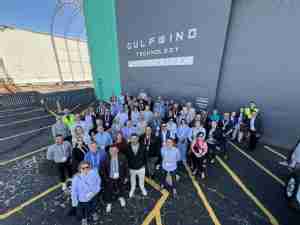Japan was assessing the damage to ports north of Japan's capital, Tokyo, where the 8.9 magnitude quake and tsunami hit. Tokyo and all ports south of the capital have resumed operations.
Following are details of the six ports most affected by the quake and tsunami. Ports with severe damage that could take months, if not years, to rebuild are: Hachinohe (medium-sized container and oil seaport)
- The port's fuel terminals supply the local fishing fleet and U.S. military installations in Japan, Korea and Okinawa.
- With seven fuel terminals, the port has the capacity to store more than 11 million barrels of oil products.
- The port handled more than 310 million gallons of petroleum products in 1997.
- Operates 48 container berths that operates regular international routes to Taiwan, Singapore, Korea, Australia, South America, Europe, Canada and the United States. Sendai (medium-sized container, breakbulk seaport)
- Formerly one of the biggest and most efficient container and breakbulk cargo centers in northeastern Japan.
- Exported 57,000 twenty-foot equivalent units (TEU) of containerised cargo, almost half of which were rubber products, in 2005. Other cargo included machinery, pulp and paper, and marine products.
- Imported 48,300 TEUs of containerised cargo, including 6,500 TEUs of lumber. It also imported marine products, foods, sporting goods, furniture, dyes, paints and wood products.
Onahama (medium-sized container seaport)
- Handled over 11 million tonnes of containerised cargo in 2000, of which 7.2 million was intra-Asia trade.
- The container port is linked to vessels travelling via South Korea, China, Australia, Southeast Asia and North America.
- Handles fertilizer and steel products at two piers, which can accommodate vessels between 1,000 and 2,000 TEUs.
- The Nakajima Pier handles ores and its two berths can accommodate vessels to 2,000 deadweight that carry coke.
- The South Beach Pier has two berths, which can accommodate 10,000 deadweight vessels, that handle raw wood.
Ports with less severe damage that could resume normal operations within weeks are: Kashima (large-sized container port)
- The ninth largest container port in Japan, handling an estimated 82 million deadweight tonnes of cargo in 2010.
- Handled 994,000 tonnes of cargo in 2001, up more than 300 percent from the previous year. That consisted of 159,000 tonnes of foreign trade.
- Cars, metal products and machine industrial goods made up more than half of all handled cargo. Other goods included sugar, non-ferrous metals, fruits and vegetables and wood products. (Reuters)









